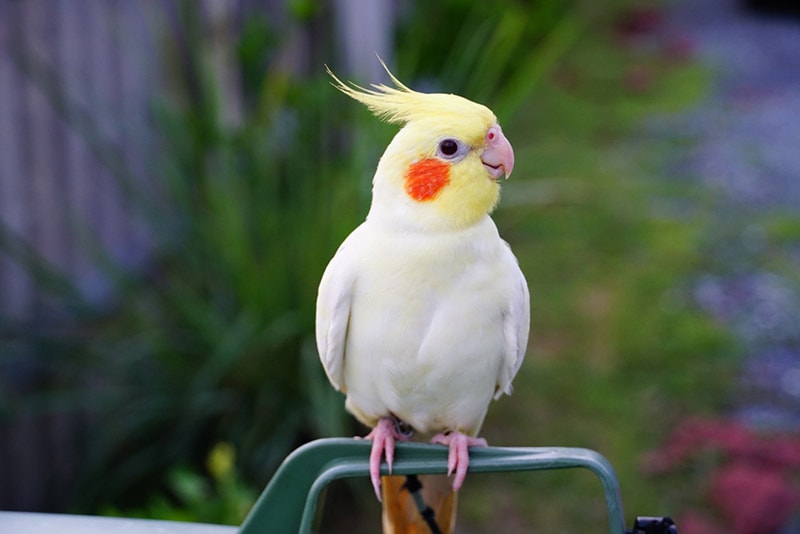How to Teach a Cockatiel to Talk: 15 Expert Tips
Updated on
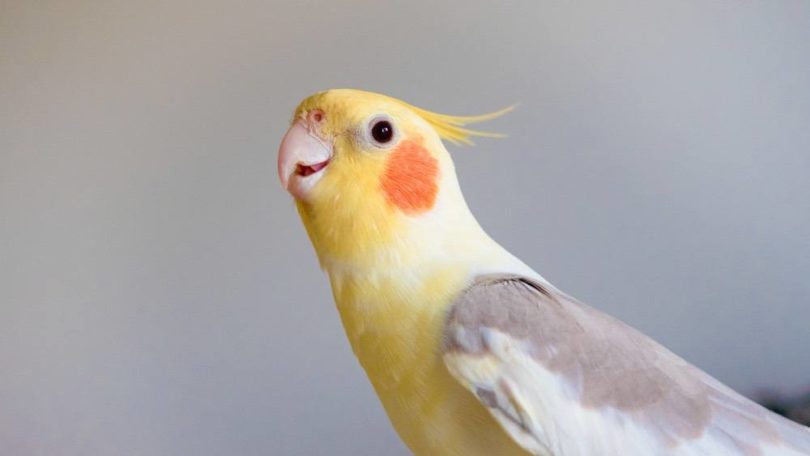
It’s hard not to fall in love with a cockatiel. They are such friendly and affectionate pets, and they’re also entertaining to listen to and watch. Birds are the only animals that can communicate with us on our own level. Our dogs and cats may learn their names and some words, but they can’t repeat the sounds we make. That gives us a unique bond with our feathered friends.
Parrots, like the cockatiel, have the intelligence and physical capability to learn to talk. Many are quite adept at speech, picking up dialects, and learning word association. The trick to succeeding with your pet is helping it understand how talking fits in with your relationship with it. Vocalizing is essential in a bird’s world. You just have to show your cockatiel how to speak the same language.

The 15 Tips on How to Teach a Cockatiel to Talk
1. Daily Playtime Builds Rapport
Birds are social creatures, and cockatiels are no exception. They typically live in large flocks, where they communicate with each other constantly. In a home setting, you are your pet’s flock. Therefore, it’s essential to build rapport with your Cockatiel. That means handling and talking to your bird every day. It will build trust and make them want to interact with you.

2. You’ll Have More Success With a Young Male Cockatiel
Males often are the most vocal of the two sexes in the avian world. It uses calls, shrieks, and chirps to attract a mate, warn cohorts of potential threats, and define its territory. Males are born to talk since it comes naturally to them. You can say the same thing about age. Younger birds are easier to teach than older ones.
3. Start Slow
It’s imperative to begin slowly. Remember that this kind of communication is new to your cockatiel. It’ll take time for it to figure out what you’re doing and how you want it to respond. Birds don’t come out of the egg knowing how to talk. Rather, they learn by imitating their parents and their wild counterparts. Stick with one word or phrase when you start on the road to speech.
4. Make It Short and Sweet
Short words work best. It’s going to take a while before your cockatiel is reciting the Gettysburg Address. You can use words like “hi” or “bye” to get the ball rolling. Let your bird watch you say the words. It’s another way to build trust and rapport with your pet.
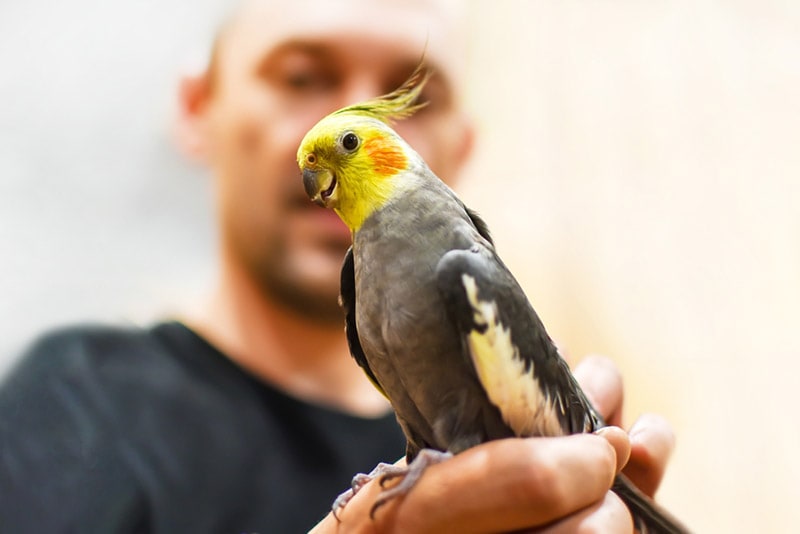
5. Choose a Quiet Place for Training Sessions
While you can teach your cockatiel in or outside of its cage, the essential factor is that the room is quiet with a minimal number of distractions. You want your bird to focus on you and what you’re saying. Turn off the TV and start the lesson, preferably with no one else in the room. That includes other pets.
6. Go With the Flow
You will probably find that your cockatiel likes specific words and sounds better than others. They may be easier for them to vocalize. We suggest going with the flow. If your pet repeats certain things, try teaching it a word or phrase that sounds like it. After all, you’re halfway there if your cockatiel is already saying something similar.
7. Take It One Step at a Time
We recommend sticking with one word or phrase at a time before moving on to the next. The last thing you want to do is to confuse your cockatiel. Remember that birds often have a few calls and songs they use more often than others. We also suggest paying attention to your pet’s mood. Cockatiels wear their emotions on their crests. A happy and content bird is more likely to be receptive.
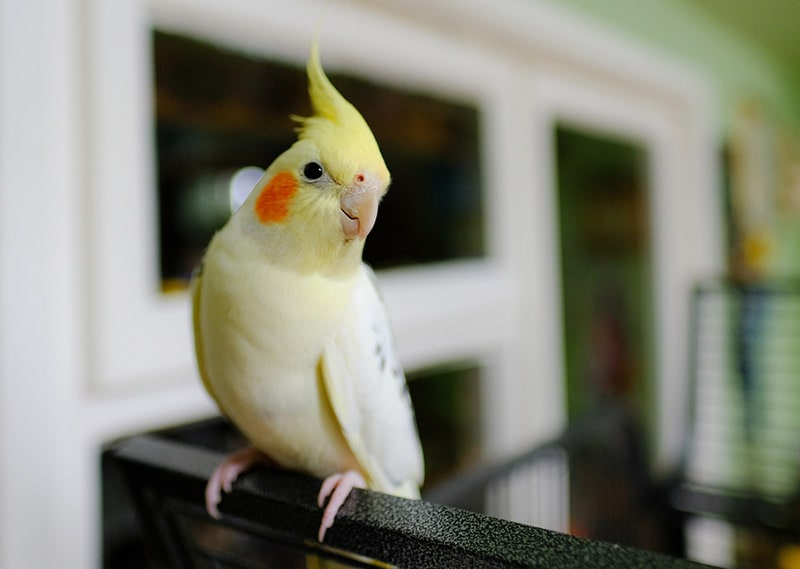
8. Positive Reinforcement Is Essential
Positive reinforcement is one of the best tricks for teaching pets to do what you want. It works when trying to get your dog to sit, and it will do the trick with your bird, too. Once they figure out the association between talking and treats, you may have a hard time getting your pet to stop. We recommend reserving treats as training aids.
9. Use Music to Your Advantage
Cockatiels have a natural affinity for music, whether it’s singing a song or whistling a tune. Research has shown they even know how to follow the melody and rhythm. A song may give your pet an added incentive to repeat your words.
10. Give Clicker Training a Try
If you have a dog, you might be familiar with clicker training. The idea is to make a sound when your pet does what you want it to do. Of course, a treat soon follows. You can try the same thing with your cockatiel. It’s another riff on creating that all-important positive association. Remember that birds notice a lot more than you think.

11. Enthusiasm Works Like a Charm
Research has suggested that birds can detect and respond to human emotions. You can bring these findings to your lessons by showing enthusiasm when your cockatiel speaks. Your apparent happiness—and the treat—will make a strong impression.
12. YouTube Is Your Friend
You may find it helpful to let other birds act as substitute teachers by playing YouTube videos of cockatiels talking. You can loop a track to repeat the word or phrase to reinforce the lesson. You can also record yourself speaking and play the video for your pet.
13. Morning and Early Evening Sessions Work Best
Birds active during the day often begin with a morning song. They may lie low during the warmest part of the afternoon and return with an evening chorus. Using your cockatiel’s natural circadian rhythm may make it easier for your bird to learn to talk. After all, mimicry is this species’ strong suit. Use it to your advantage.
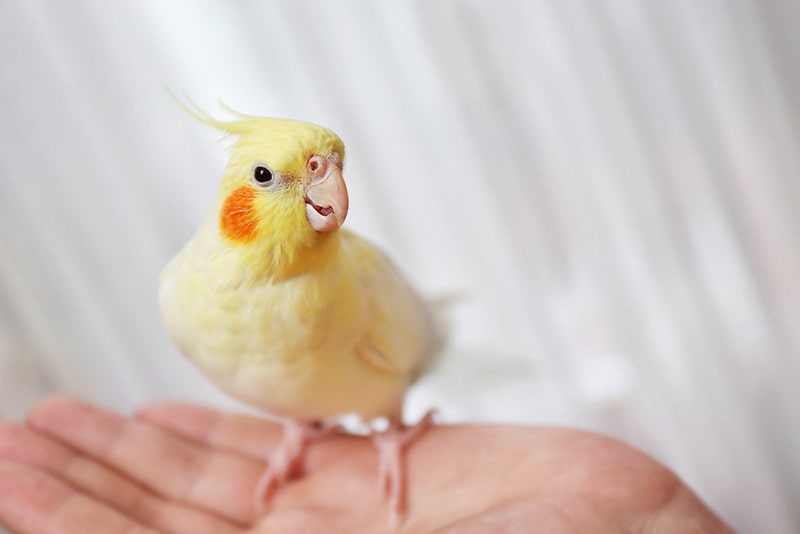
14. Rinse and Repeat
As boring as it may seem, repetition is essential for success. We understand why you might not want to repeat the same words multiple times, but that’s how your pet will learn. You should keep training sessions short, limiting them to less than 10 minutes for your sake as well as your bird’s. Make sure to enunciate clearly to help your cockatiel learn the sounds.
15. Be Patient
The best advice we can give you is to be patient. Some birds catch on to talking quicker than others. Bonding is also a vital piece of the puzzle. When your pet learns to trust you, they will want to mimic the sounds you’re making. Keep repeating the lessons, and one day, the penny will drop.

Conclusion
Teaching your pet to talk is a rewarding experience that you can enjoy with your cockatiel. It may take time and patience, but you’ll be glad when your efforts pay off with a repeated word or phrase. Once your bird learns to mimic you, you can branch out with new and longer phrases. You can even take it to the next level with some tricks. Remember that a cockatiel is smart enough to figure it out with time.
You may also be interested in:
Featured Image Credit: kikumin, Shutterstock

